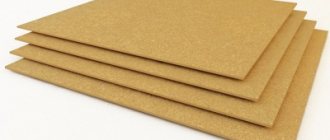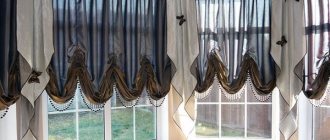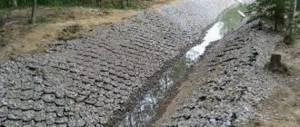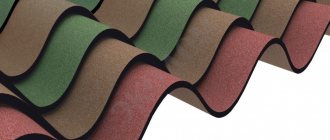Geotextiles: what is it and how is it used in different fields
Before buying geotextiles, you need to decide what it is and how it is used. This is a product consisting of woven and non-woven fabrics, which are created from polypropylene and polyester components.
This fabric is characterized by a huge range of applications.
Initially, this material was used only for drainage structures and the construction of construction projects, but then it began to be used for domestic and industrial purposes. Panels are produced in different volumes and come in different types. The fabric is sold in rolls, ranging from 2 meters to 5.5 meters wide. The length can be from 40 to 150 meters.
Blade sizes vary for different applications
The characteristics of raw materials may vary depending on their types. But some characteristics are the same for all types of products:
- protects against rodents and insects;
- differs in elasticity;
- has a long service life;
- resistant to corrosion and decay.
This diagram clearly demonstrates all the advantages of such a product.
With a powerful impact, the integrity of the material is not violated, it is simply tightened. Geotextiles are resistant to various processes and chemical influences that occur in the soil. But such fabric allows water to pass through.
Use in road construction
This material is relevant in many areas of construction. The answer to the question: geotextiles, what they are and how they are used, help many people solve many household and industrial problems.
Not a single construction of large highways can be done without this fabric.
In road construction, the canvas is used to create the foundation for a future road. With its help you can make an elastic and durable base that is resistant to external influences. This increases the service life of roads and eliminates the frequent need for repair work.
Advantages of this fabric in road construction
The products are used for laying footpaths from tiles or paving stones, for strengthening road slopes and for laying road surfaces. Also in road construction, the sheet is used for the following purposes:
- creation of drainage structures;
- dividing bulk systems into layers;
- distribution of different loads;
- filtration of liquid substances;
- protection of individual elements from destruction.
The functional surface ensures road stability even in difficult terrain
Helpful information! When installing, you must follow the technology. It is important to pre-prepare the surface. The soil is leveled, all large stones and parts of roots are removed from it.
Use for summer cottage: geotextiles for garden paths
The use of geotextiles for garden paths is popular. The implementation of original paths can be considered an important stage in the formation of landscape design. An important point is the creation of a durable pillow for such structures. In this case, this canvas is used as a substrate for sand on which the tiles are laid.
The stability of paths in the garden is influenced by the correct installation of geotextile fabric
Geotextile substrate is multifunctional. It protects against weeds, provides drainage and good load-bearing function.
Paths can be of different shapes, which absolutely does not affect their performance properties when using geotextiles
In addition to arranging paths, this material is used for the following work:
- strengthening the slopes of greenhouses and beds;
Geotextiles are involved in any strength strengthening of slopes on the site
- separation of different plantings;
- protection of crops from weeds;
- reinforcement of moist or too soft areas of soil;
- use as a warming and covering fabric.
The diagram shows options for using canvas in a summer cottage
Geotextiles for garden paths enhance the strength of structures and prevent subsidence of materials. In landscape design, the material is used for the formation of flower beds and lawns, for arranging flower beds and lawns, as well as for installing alpine slides and creating playgrounds and children's playgrounds.
In landscape design, such material allows you to bring the most unusual ideas to life.
Helpful information! In summer cottages, needle-punched material is often used, the structure of which includes small holes. Such agrofibre is used as a protective and covering material.
How is geotextile used in the construction of houses?
In the construction of houses, geotextiles are often used for foundations. To ensure that the foundation under the building is durable, a cushion or fill is used for the future foundation.
Geotextile material contributes to structural strength
Geotextiles protect the structure from the pressure of melt and groundwater and from soil deformation. It is also worth highlighting the following points:
- the canvas prevents the mixing of sand, soil and crushed stone;
- the load on the base is evenly distributed;
- the load-bearing capacity of the structure increases;
- the foundation becomes more stable and stable.
Protection of the foundation from rising groundwater
Related article:
Geotextiles for drainage (geofabric). A separate publication provides detailed guidance on the selection and use of this material for drainage work.
Characteristics of geotextiles
The main characteristics of the geotextile are based on the method of its manufacture and the properties of the material from which it is made:
- The service life of the material is at least 25 years.
- It is resistant to rotting and fungus, as well as various damage from rodents and insects.
- Has good protection from moisture. Shows excellent quality indicators, even when exposed to ultraviolet radiation and chemically aggressive environments.
- The fabric is resistant to temperature changes (from 60 to 100℃).
- It has good elasticity and strength, which allows it to be used as a reinforcing material. The fabric can elongate up to 45%, at maximum stretch, and withstand the load for quite a long time.
- Has excellent filtering properties. It allows moisture to pass through well, while retaining various soil particles.
- During operation it does not form harmful substances, therefore it is an environmentally friendly material.
- The material is temperature resistant and does not ignite when exposed to open fire.
Types of geotextiles
Having decided what geotextiles are and how they are used, it is worth considering that this product may differ depending on the production technology. The following types of material are distinguished:
- Calendered geotextiles are made by bonding fibers using high temperatures, while the fabric has high strength properties, which minimizes the likelihood of ruptures;
The reliability of the material allows it to be used in the most complex structures
- the needle-punched type is made from propylene and polyester fibers; water can penetrate through the material in the longitudinal and transverse directions;
One of the areas of application of needle-punched dornite
- knitting-stitching material is made from special fibers of a certain length; to firmly connect the fibers, they are stitched with threads.
Knitting and stitching fabrics have a special structure
Helpful information! This material is made from polyester mass. On conveyor belts, pieces of fibers are torn from bales of similar mass, which are transformed into individual threads under an air stream. Interestingly, 1 gram of such thread has a length of 3 km. After the fluffing procedure, the threads are transformed into canvas in a special machine.
Types of geotextiles
Depending on the technology used in the production of such material, geotextiles are classified into two main types - woven and non-woven fabric. Woven material is made by weaving polyester or synthetic threads at right angles. With this manufacturing method, the strength of the finished material depends entirely on the initial flexibility and strength of the fiber, as well as on the distance between intersecting and parallel fibers.
Kinds:
- Needle punching material - is formed by mechanically pulling fibers using jagged special needles through the fibrous structure. This material has the most elastic structure, which can effectively pass water in any type of soil, even clay. This property of the resulting material is used on various soils, and gives it versatility of use.
- Therm fixed - is a type of needle-punched material, which is additionally strengthened by heat treatment. During processing, the canvas is pulled through the rollers, while additionally blowing it with hot air. The disadvantage of this method of manufacturing the material is the weakening of its filtering properties when heated, but the thinnest fabric of all types of geotextiles is obtained.
- Thermal bonded - for the production of such material, chemical or thermal treatment of synthetic fibers is used, which contributes to the formation of a fabric of a homogeneous structure. The fabric is resistant to increased loads and has excellent filtration properties. The material is not used in strengthening slopes and constructing drainage systems on fine soils.
- Woven fabric is obtained by rigidly joining polymer fibers together using various weaving methods. The quality of the fabric and its density completely depend on the type of weaving. This type of fabric is widely used in landscape design to strengthen embankments and provide soil drainage. On very steep slopes, plants are planted using a canvas with woven seeds.
- Knitted geotextiles are produced using loop weaving of fibers. Under the influence of mechanical damage, it can easily unravel, therefore it has lower resistance to loads. This is the cheapest material of all types of geotextile.
What geotextiles are recommended for drainage systems?
Geotextiles in the drainage system are used as a filtration layer for perforated highways. Such a grid not only filters water, but also prevents silting of the gravel bed.
The diagram shows the procedure for performing work using a special cloth
This material prevents different layers of soil from mixing. For drainage systems, a product with the following parameters is selected:
- density should be up to 150 g/m2.
- a needle-punched monofilament cloth is used;
- the filtration coefficient is about 130 m per day;
- the pressure strength should not be less than 400-500 N;
- The width of the roll depends on the specific cross-section of the filtration layer.
Installation of the canvas is carried out without tension. For overlap, allowances of 0.3-0.6 meters are left. When working on large areas, additional tissue fixation is required. After tucking the edges of the canvas, the soil is laid and compacted.
The special properties of the fabric prevent mixing of different types of material
Helpful information! When choosing a material, you should give preference to products from trusted manufacturers. During installation, it is worth considering that the material is susceptible to the influence of sunlight, so the canvas must be covered with soil as soon as possible.
A few years ago, construction was extremely costly in terms of finances and time. Owners of private houses were forced to depend on constant major repairs, repeated with alarming frequency. But the construction market, which is annually replenished with new products, today offers buyers material in the production of which innovative technologies and completely opposite standards of technological processing are involved. Representing in its structure one of the varieties of geosynthetic materials, geotextiles, and this is the newest product of construction production that will be discussed, is considered a material endowed with universal characteristics.
Content
- What is geotextile? Classification of geotextile materials
- Technical characteristics of geotextiles. Density
- Application of geotextiles video
- hydraulic works
- arrangement of pipelines
- roofing
- geotextiles in gardening video
- Geotextile dornite
What is geotextile? Classification of geotextile materials
Geotextiles, in their structural composition, are a natural or synthetic textile product that has a certain level of water resistance and strength characteristics, which allows it to be used on various construction sites, mainly associated with contact with the ground and excess moisture.
Originally intended to prevent mixing and blurring of dissimilar layers, today geotextiles have a slightly different functional focus. When using the term “geotextile,” a competent specialist imagines that we are talking about one of the representatives of geosynthetics, which is extremely in demand in various branches of the construction industry. Inert to the action of various chemical reagents and biological factors, geotextiles are not prone to rotting and are completely safe for the natural environment.
Manufacturers of materials, such as https://dorpir.ru/, for construction propose to classify geotextile materials according to the principle of technological features, according to which geofabric and geofabric are distinguished, that is, woven and non-woven textiles, respectively.
Geowoven textiles are a material whose production technological conditions require the interweaving of thread fibers of varying strength levels, located at right angles. These features make it possible to produce a material with a high degree of deformability and water resistance, which has found its use as a reinforcing agent that helps increase the level of strength of soil structures.
Non-woven geotextile is a fabric formed by mechanically or structurally securing fibers.
Technical characteristics of geotextiles. Density
An important technical characteristic of geotextiles is its density. Based on its indicators, it is possible to indirectly determine the load level that the material can withstand, that is, the damage threshold. The density of geotextiles that have found their application in the construction industry ranges from 80 to 1200, and is measured in grams per square meter (g/m2). But it is worth noting that the strength characteristics of geotextiles depend not only on its density. The manufacturing method also plays an important role in determining the degree of strength. Existing methods for producing the most common geosynthetics are divided into needle-punched and thermally bonded or calendered. The strength of the latter is much lower than geotextiles made using the needle-punched method, since it is looser and thinner.
Application of geotextiles
Road construction work, construction of hydraulic structures, reinforcement of soil surfaces, landscape design and laying of pipelines - all this cannot be done without the use of geotextiles.
hydraulic works
In an effort to extend the longevity of foundations, basements and retaining walls, builders resort to the use of geofabric, which acts as a separator between the gravel bedding layer and the fine-grained soil. By preventing mixing of layers, geotextiles help protect concrete structures from capillary wetting by soil water. In addition, using geotextiles, it is possible to organize drainage, the effectiveness of which will be maintained at the proper level, due to the lack of contact of the concrete surface with a source of moisture.
Drainage geotextiles are also used to provide optimal protection for pipes located underground. The structural characteristics of the material make it possible to create a kind of geotextile filter that will ensure unhindered penetration of moisture and simultaneous retention of particles of humic substances and any other fine structures. Today, the creation of effective drainage structures is not complete without the use of perforated pipes, which contribute to the high-quality outflow of moisture from the foundation, preventing puddles in economic areas and recreation areas. The use of geotextiles will protect pipes equipped with perforations from clogging.
arrangement of pipelines
Construction of a gas pipeline, installation of sewerage systems and water pipelines requires the use of materials that are resistant to physical and mechanical stress. Geotextiles can successfully serve as such a material. Its use as a reinforcing and anti-corrosion coating will contribute to 100% protection and uninterrupted operation of the pipeline and sewer system.
roofing
Speaking about the use of geotextiles, we must not forget about roofing work, which is also the point of application for the use of geotextiles.
A structural solution for an inversion type roof involves laying geotextiles on top of a layer of thermal insulation materials. When carrying out installation work on arranging an existing roof with landscaping, geosynthetics will also help. In this case, it is laid twice: on top of the waterproofing layer, and also between the humic composition and a layer of drainage materials to prevent mixing of dissimilar structures.
geotextiles in gardening
Manufacturers of building materials also took care of gardeners and gardeners by creating a special type of geotextile used in gardening. Garden geotextiles are a material with universal characteristics, the use of which protects cultivated plants from weeds. You can forever forget about tedious weeding if you lay out a layer of geotextile under a layer of fertile soil and create holes in it to ensure the normal functioning of cultivated plants.
But this is not the only way to use geotextiles in landscape design. There are certain types of geotextiles designed to correct the root system of large trees, which will prevent damage to the integrity of the soil structure.
Decorative growing of plants also involves the use of geotextiles, but as an improvement to the drainage system. Coarse-grained filler and soil, separated by a layer of geotextile, helps create a better outflow of excess moisture, which contributes to the most favorable cultivation of plants.
Geotextile dornite
Geotextile Dornit, which received its name in honor of the DorNII Institute, is a unique geosynthetic, which is a polyester material in its structure. A distinctive feature of Dornit is the needle-punched manufacturing method, which provides this material with resistance to various mechanical damage and the ability to independently carry out drainage, since Dornit geotextiles are not part of the drainage system, as is usually the case, but the drainage system itself.
Author: Sergey and Svetlana Khudentsov
10
Geotextiles: technical characteristics
Geotextiles are affordable and versatile. In addition, the material has the following qualities:
- resistance to oxidative process;
- resistance to various aggressive influences;
- resistance to fungal organisms;
- prevents the growth of weeds;
- stops soil erosion;
- has a filtering function;
- helps accelerate water drainage;
- has excellent reinforcing properties.
The excellent characteristics of the material allow it to be used on complex industrial and construction sites
Correctly selected geotextiles reduce material consumption, simplify work and increase the service life of various structures, and also increase strength and are a compact and convenient material.
Geotextiles serve as a guarantee of the quality of constructed structures










